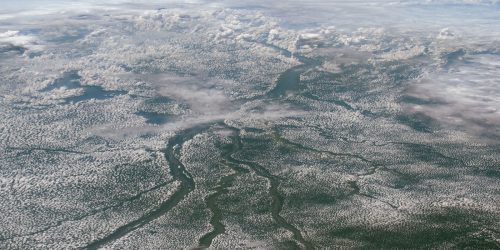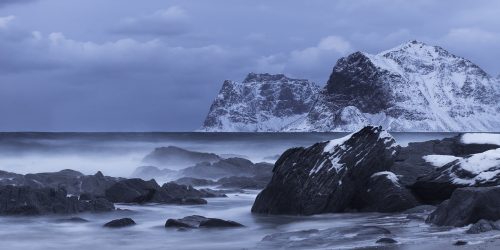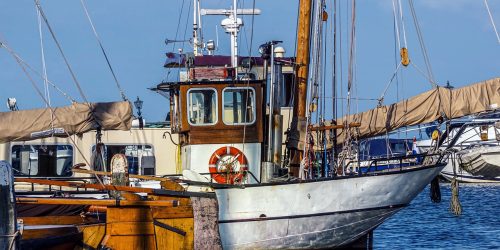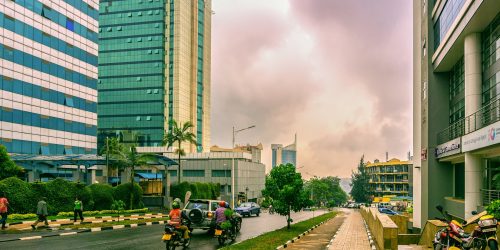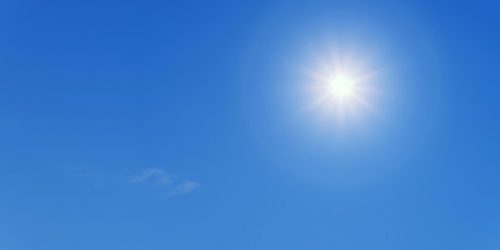CPO’s Atmospheric Chemistry, Carbon Cycle and Climate (AC4) Program is announcing 9 new 3-year and 2 new 2-year projects in Fiscal Year 2022 (FY22) that aim to increase our understanding of emission factor of fires and the composition and chemical transformation of wildfire smoke components from the wildland-urban interface. The selected projects total $6.3M1 in grants.
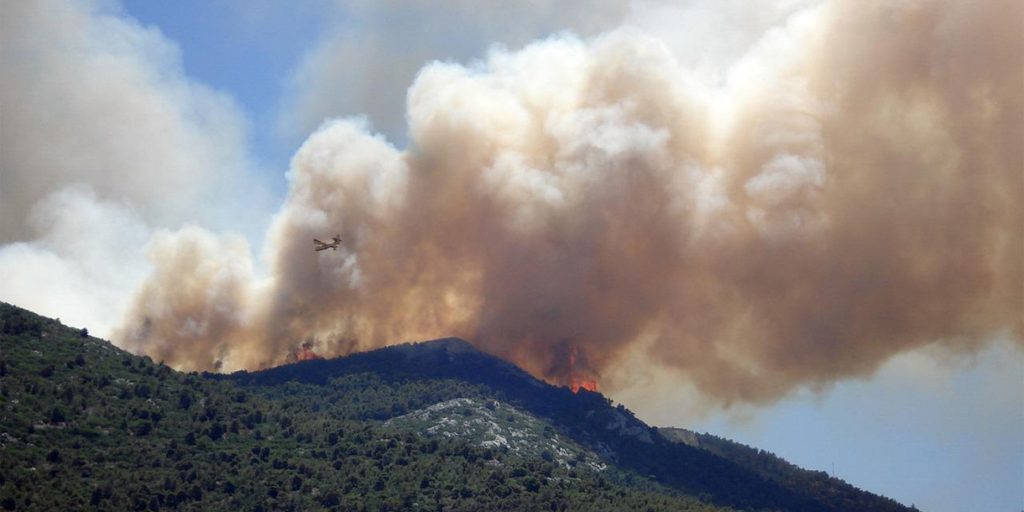
Biomass burning is one of the largest atmospheric perturbations, with impacts on air quality, weather and climate. The temporal and spatial scales of the contributions of fires to atmospheric composition range from short-lived air pollutants over small areas in the vicinity of local fires to long-lived greenhouse gases affecting regional or even global distributions from large-scale seasonal fires. The composition of smoke varies, and is still largely understudied, especially its chemical evolution. The most recent field campaign, FIre Influence on Regional to Global Environments and Air Quality (FIREX-AQ), mostly focused on wildland fires in the western U.S., which are increasingly affecting air quality, including in urban areas downwind, causing disruptions to daily life and harm to human health. As more people move to fire-prone areas and wildfires become more frequent with the changing climate, the wildland-urban interface is becoming more important in assessing smoke impacts, both from burning biomass as well as houses and household items. Furthermore, emission factors for fires from the wildland-urban interface are less studied than from wildland fires, because among other factors, the opportunities to study them are rare
In addition to in situ data from field campaigns, NOAA develops several satellite-based fire and smoke products that can provide insights into smoke spread and its chemical evolution and impacts.
In FY22, to build on and expand its previous wildfire investments, the AC4 program invites proposals focused on one or more of the following:
- Research that puts FIREX-AQ data in a larger, including interannual, context, ideally incorporating data from other field campaigns and measurement networks.
- Applications of Joint Polar Satellite System (JPSS) and Geostationary Operational Environmental Satellite (GOES) satellite products to study biomass burning, both within the U.S. and globally.
- Analysis of wildland fire smoke impacts on urban areas and fires at the wildland-urban interface.
- Investigation of emission factors of fires that include household materials.
The 11 new projects2 funded by the AC4 program in FY21 are:
- Impacts of precursor emissions from wildfires on O3-NOx-VOC chemistry over urban areas
Recent decades saw increasing wildfire activities in the western US. The annual burned area has increased by more than a factor of three over California from 1985 to 2021. While the impacts of wildfires on particulate matter air quality are well known, the extent to which biomass burning emissions affect gas air pollutants, such as O3 and its precursors, is less clear. This project will explore how wildfire emissions, when mixed with anthropogenic emissions, affect the O3-NOx-volatile organic compounds (VOC) chemistry over downwind urban areas in California. The proposed study will use emerging new-generation satellite observations (TROPOspheric Monitoring Instrument (TROPOMI), Cross-track Infrared Sounder (CrIS), Moderate Resolution Imaging Spectroradiometer (MODIS)), in situ measurements from recent field campaigns (Western Wildfire Experiment for Cloud Chemistry, Aerosol Absorption And Nitrogen (WE-CAN) and Fire Influence on Regional to Global Environments and Air Quality(FIREX-AQ)) and ground-based monitoring networks, a hierarchy of models from simple box model to meteorology-chemistry model, to track the evolution O3 precursors (NOx and VOCs) from fires, investigate the radiative and chemical effects of fire smoke on O3 chemistry, and analyze their variations with fire (i.e., fuel type, fire intensity, injection height, combustion efficiency).- PI: Ronald C. Cohen, University of California, Berkeley
- Evolution of Emissions over the Course of Individual Wildfires as observed from Space
This project proposes to use comprehensive trace gas and aerosol measurements made from satellite remote sensing instruments to study the composition of wildfire emissions, how these evolve over the course of individual wildfires, and depend on fire radiative power. The project also aims to study how sensitive the wildfire plume composition sensed from space is to retrieval biases and how these biases affect the analysis of the evolution of wildfire emissions. By combining our analysis of wildfire plume composition sensed from space with insights from the Fire Influence on Regional to Global Environments and Air Quality (FIREX-AQ) and Fire Influence on Regional and Global Environments Experiment (FIREX) Firelab 2016 studies, the team of researchers will develop a simple parameterization that calculates the gas-phase and aerosol composition of wildfire emissions based on parameters that can be sensed from space.- Lead PI: Joost de Gouw, Cooperative Institute for Research in Environmental Sciences (CIRES), University of Colorado
- Co-PI: Barbara Dix, CIRES, University of Colorado
- Analyzing Emitted Organic Trace Gas and Aerosol Speciation at the Wildland-Urban Interface and their Atmospheric Chemical Transformations
The 7 largest wildfires in California took place from 2015 to 2020, with 2021 already being another extreme wildfire year. Many of these large wildfires happened at the wildland-urban interface (WUI), where human made structures mix with natural vegetation. Thus, it is critical to understand emissions from WUI wildfires, including emissions from burning structures, and the transformation of the emitted materials in the atmosphere. This project will investigate the gas and particle phase organic composition of smoke from WUI fires, including structures, and smoke arriving in the San Francisco Bay area that has been subject to various levels of aging. By collecting continuous gas and particle measurements using in-situ laboratory-based instrumentation, coupled with rapid deployment of a mobile sample collection platform, the team proposes to study the dynamically changing composition of wildfire smoke in a highly populated urban region during two fire seasons. The team also proposes to measure structure fires emissions and determine emission factors through collaboration with an ongoing study of structure combustion at the National Institute of Standards and Technology funded by CalFire.- Lead PI: Allen Goldstein; University of California, Berkeley; Nathan Kreisberg, Aerosol Dynamic Inc.
- Impact of smoke on ozone, aerosols and oxidant chemistry in urban and rural areas in the U.S.
Wildfire smoke regularly impacts millions of people around the U.S. As part of the NOAA/NASA Fire Influence on Regional to Global Environments and Air Quality (FIREX-AQ) and NSF Western Wildfire Experiment For Cloud Chemistry, Aerosol Absorption And Nitrogen (WE-CAN) measurement campaigns, the community has collected an unprecedented amount of data and knowledge on fire emissions and in-situ smoke plume chemistry. However, much less is known about how these plumes mix and interact with anthropogenic emissions in urban areas and in the wildland-urban interface (WUI). This project will examine several key questions regarding O3 formation, oxidant production, aerosol sources and smoke identification. Specific objectives include: (1) Use a detailed chemical box model to examine multiple smoke scenarios in urban and rural areas to better understand O3 and oxidant production; (2) Examine observations in urban and rural locations to evaluate the consistency of PM2.5/CO/NOx/O3 enhancement ratios measured from individual plumes by aircraft observations; (3) Use long-term data from satellite indicators combined with surface observations of PM2.5 and smoke tracers to improve identification of smoke at the surface, especially for low smoke concentrations, and therefore improve our understanding of smoke impacts.- Lead PI: Daniel Jaffe, University of Washington Bothell
- Structural Fires at the Wildland Urban Interface: Emission Factors, Inventories, and Implications
The wildland urban interface (WUI) is growing rapidly in most parts of the United States. With 45 million houses in the U.S. located in WUI regions and wildfire frequency and activity on the rise, there is a growing concern that wildfire-related structural fires might be an important source of air pollutants to the atmosphere. However, emissions from structural fires are very poorly understood and what we do understand remains fragmented and incomplete. The goals of this research are to study the detailed gas- and particle- phase emissions from the combustion of common structural materials and their fuel complexes at different scales and develop an emission factor dataset and emissions inventory for structural fires specific to the wildland urban interface. The following objectives will be addressed in the proposed work: (1) Characterize gas and particle emissions from small-scale fires of structural materials and their complexes; (2) Study emissions from large-scale fires of realistic fuel complexes and structures (to be carried out at the National Fire Research Laboratory at NIST); (3) Develop an emission factor dataset and emissions inventory for structural fires specific to the wildland urban interface- Lead PI: Shantanu Jathar, Colorado State University
- Co-PI: Christian L’Orange, Colorado State University; Thomas Borch, Colorado State University
- Improved retrievals of fresh and aged smoke properties from GOES
Observations from geostationary satellites offer unprecedented opportunity to track and better understand smoke plumes in the atmosphere. Smoke plumes evolve physically and chemically as they are transported downwind, manifested as changes in their optical properties. If such changes can be properly characterized from spaceborne observations, this information would provide powerful constraints for regional and global models that represent biomass burning emissions and their chemical and physical changes during atmospheric transport, necessary information for evaluation of their impacts on climate and on human and environmental health. This project aims to improve aerosol retrievals from geostationary satellite observations, with six specific objectives: (1) Build and test a comprehensive suite of smoke-specific aerosol models constrained by dual-view Geostationary Operational Environmental Satellite (GOES) -16 and -17 observations, AErosol RObotic NETwork (AERONET), and lab and field campaign measurements, for biomass burning emissions near source and transported; (2) Develop a new, machine learning based aerosol retrieval method for GOES observations; (3) Characterize short-term temporal variability in near-field emissions, using new GOES retrievals; (4) Implement advanced methods for tracking smoke plume height, motion, and dispersion; (5) Examine the impacts of transport and aging on smoke properties; and (6) Assess the feasibility of transitioning advancements to operational GOES Advanced Baseline Imager (ABI) retrievals of smoke aerosols.- Lead PI: Sonia Kreidenweis, Colorado State University
- Co-PI: J. Christine Chiu, Colorado State University; Qijing (Emily) Bian, Colorado State University
- Composition and Transformations of Organic Aerosol Emitted from Facility Simulated Wildland-Urban Interface Fires
Atmospheric aerosol particles represent the most uncertain aspect of air quality control issues and the broader climate system. Models routinely underpredict formation, mass loadings, and temporal trends of anthropogenic organic aerosol (OA). As a result of climate change, more frequent forest wildfires have become a major source of primary organic aerosol (POA), secondary organic aerosol (SOA) and associated volatile organic compounds (VOCs). Although many studies investigated sources, formation, and atmospheric aging mechanisms of OA attributed to a range of biomass fuels, the increased frequency of the most devastating wildfire events occurring at the wildland-urban interface imply that the amount, composition and properties of OA are controlled not only by burning biomass, but also by burning a range of engineered man-made materials. This project aims to perform molecular characterization of the chemical composition of OA samples collected during planned experiments at the National Institute of Standards and Technology National Fire Research Laboratory (NIST-NFRL) test facility simulating smoke emissions in the wildland-urban interface fire events and will conduct fire measurements on real-scale objects, such as entire furnished rooms. The team will perform the first molecular characterization experiments on various types of particulate matter emitted during NFRL test burns. This work will provide important input for closure studies focused on the source apportionment of POA; understanding of recursors and formation mechanism of SOA, chemical transformations, and aging of OA; understanding of composition of light-absorbing components in OA (i.e. brown carbon).- Lead PI: Alexander Laskin, Purdue University; Sergey Nizkorodov, University of California, Irvine
- Development and Improvement of Statistical Models of the Mass Absorption Cross-Section for Black Carbon Aerosols
Black Carbon (BC) aerosols play an important role in the climate system directly by absorbing light, and semi-directly by heating of the atmosphere. They also have an indirect effect on cloud properties, while deposition of BC onto snow has the potential to reduce surface albedo and increase melting. Global chemistry-climate models are often used to estimate the climate effects of BC, but the impacts do not always agree among these models. This project will provide an accurate, generalizable statistical model for the conversion of aerosol light absorption measurements to BC mass loadings for both filter-based absorption photometers and remote sensing techniques that will enable improved evaluations of predicted BC concentrations in chemistry-climate models. The team will achieve this goal through two objectives: (1) Improve upon our existing models and explore alternative models to reduce prediction biases across a range of atmospheric environments; (2) Apply the best statistical model to remote sensing data to evaluate its applicability for use in chemistry-climate model evaluation.- Lead PI: Andrew May, Ohio State University
- Characterizing Fire Emissions and Aging Using New VOC Retrievals from the CrIS Sensors
Fire emissions of volatile organic compounds (VOCs) drive production of particulate matter and ozone, with major human health impacts. Field campaigns can provide valuable snapshots to understand emission mechanisms and in-plume chemistry, but sustained global VOC observations are needed to quantify these processes at scale and to diagnose temporal changes. However, existing VOC observations are sparse and often ill-suited for testing and advancing models. The proposed work will change this landscape by applying a suite of new space-based VOC retrievals from the Cross-track Infrared Sounder (CrIS) to better understand fire emissions and their atmospheric impacts. VOCs targeted in this project include key biomass burning emissions as well as tracers of the ensuing oxidative processing.- Lead PI: Dylan Millet, University of Minnesota
- Co-PI: Kelley Wells, University of Minnesota; Fabien Paulot, NOAA GFDL
- Deposited smoke in urban areas; surface grime and emissions of volatile products
Biomass burning is an increasingly important source for organic compounds in the atmosphere, especially with current trends towards a warmer, drier climate in the Northwest. When transported to urban areas, these chemicals can contribute to air quality exceedances, with negative impacts on human health. Progress is being made to better understand how wildfire emissions vary for different burns as well as how the smoke plume evolves, or ages, after it is emitted. However, despite a range of laboratory and ambient studies, there is a lack of understanding of the rate at which the brown color of smoke particles will bleach in the atmosphere. In addition, there is little information on the volatile organic compounds produced during aging and the physical properties of very aged smoke particles. This project proposes a laboratory study to probe the aging of biomass burning organic aerosol particles under different environmental conditions. The team will measure changes in both the condensed phase and the gas-phase during longer term photolysis and heterogeneous oxidation experiments. This study also makes use of previously collected filter samples from both Fire Influence on Regional and Global Environments Experiment (FIREX) 2016 and 2019, expanding the context for the FIREX campaigns. The combined results will provide a more complete view of the impact of aged BBOA particles transported to urban areas.- Lead PI: Rachel E. O’Brien, WIlliam and Mary
- Co-PI: Chris Cappa, University of California, Davis; Manjula Canagaratna, Aerodyne Research
- Global multi-scale modeling and satellite data assimilation to quantify fire emissions at the wildland-urban interface and their impacts
Biomass, structure, and waste burning within the Wildland-Urban Interface (WUI) have caused significant destruction to communities around the world. In addition, emissions from these fires, which include hazardous air pollutants, have significant impacts on air quality and public health across multiple spatiotemporal scales. Successfully conducted field campaigns (e.g., Western Wildfire Experiment For Cloud Chemistry, Aerosol Absorption And Nitrogen (WE-CAN) and Fire Influence on Regional to Global Environments and Air Quality(FIREX-AQ)) and geostationary satellite observations (e.g., GOES AOD and FRP products), along with the extensive studies on fires over the U.S. (especially the WUI fires), have significantly pushed our understanding of fires and fire impacts on air quality forward. This presents a unique opportunity to apply the knowledge learnt from U.S. fires at the global scale. This project aims to quantify fire emissions and impacts on air quality in the WUI at major/representative urban areas globally by combining satellite observational data and a multi-scale modeling framework (the Multi-Scale Infrastructure for Chemistry and Aerosols; MUSICA) improved by field campaign measurements. Specifically, the proposed work aims to address the following questions: (1) What can we learn from the U.S. FIREX-AQ and WE-CAN field campaigns and GOES fire products, and do those lessons apply to the global domain? (2) What are the emissions from WUI fires and how are they different from wildland fires? (3) What are the impacts of WUI fire emissions over global representative urban regions?- Lead PI: Wenfu Tang, National Center for Atmospheric Research (NCAR)
- Co-PI: Benjamin Gaubert, NCAR
1The funding will be distributed over the life of the projects and future-year funding is conditional on appropriations.
2 At the time of publication, all awards may not have been accepted by recipient institutions


